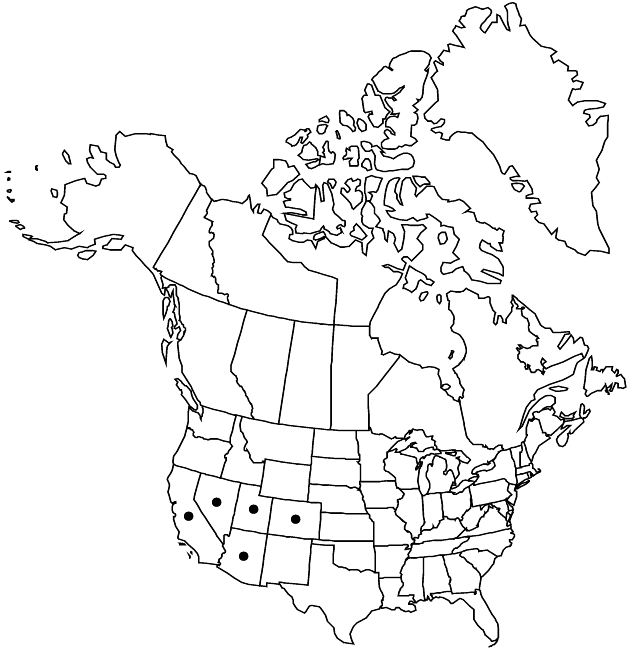Ericameria nauseosa var. leiosperma
Phytologia 75: 86. 1993.
Common names: Smooth-fruit rabbitbrush
Endemic
Basionym: Bigelowia leiosperma A. Gray in A. Gray et al., Syn. Fl. N. Amer. 1(2): 139. 1884 (as Bigelovia)
Synonyms: Chrysothamnus nauseosus subsp. leiospermus (A. Gray) H. M. Hall & Clements
Revision as of 20:01, 29 July 2020 by imported>Volume Importer
Plants 25–60 cm. Stems yellowish green, often leafless at flowering, densely, compactly tomentose. Leaves yellowish green; blades 1-nerved, filiform, 10–30 × 0.8–1 mm, faces glabrate. Involucres 8–11.5 mm. Phyllaries 17–31, apices erect, acute to obtuse, abaxial faces glabrous. Corollas 5–8.5 mm, tubes mostly glabrous, lobes 0.5–1.1 mm (erect to incurved), glabrous; style appendages longer than stigmatic portions. Cypselae glabrous; pappi 3–6.6 mm. 2n = 18.
Phenology: Flowering late summer–fall.
Habitat: Gravelly and sandy soils, rocky crevices
Elevation: 700–2800 m
Distribution

Ariz., Calif., Colo., Nev., Utah.
Discussion
Selected References
None.
Lower Taxa
None.
"fine" is not a number.
... more about "Ericameria nauseosa var. leiosperma"
resinous +
glabrous +
introrse +
connate +
distinct +
herbaceous +
erect +
acute;obtuse +
scarious +
hirsute +
papillate +
cymiform +
continuous +
decurrent +
1-nerved +
filiform +
ribbed +
stigmatic +
barbellate +
persistent +
20;60 +
subequal +
absent +
Smooth-fruit rabbitbrush +
yellow +
absent +
monomorphic +
5-12-ribbed +
dimorphic +
glabrous +
3mm;8mm +
staminate +
straight +
fascicles +
resinous +
gland-dotted +
axillary +
absent +
glabrate +
distinct +
proximal +
1;5 +
bisexual +
dispersed +
singly +
indeterminate +
surrounding +
obconic;subcylindric +
alternate +
yellowish green +
cauline +
erect;spreading or reflexed +
glabrous +
? (?) +
expanded +
herbaceous-tipped +
herbaceous +
chartaceous +
2-carpellate +
inferior +
attached +
anatropous +
whitish +
persistent +
falling +
tough +
thick +
absent +
connate +
persistent +
distinct +
falling +
chartaceous +
unequal +
Phytologia +
1993 +
pistillate +
absent +
fertile +
epaleate +
pitted +
convex +
fibrous +
exalbuminous +
modifed +
3;5 +
Endemic +
alternate +
leafless +
resinous +
yellowish green +
prostrate +
tomentose +
2-branched +
glabrous +
Ericameria nauseosa var. leiosperma +
Ericameria nauseosa +
variety +
campanulate +
shorter +
glabrous +